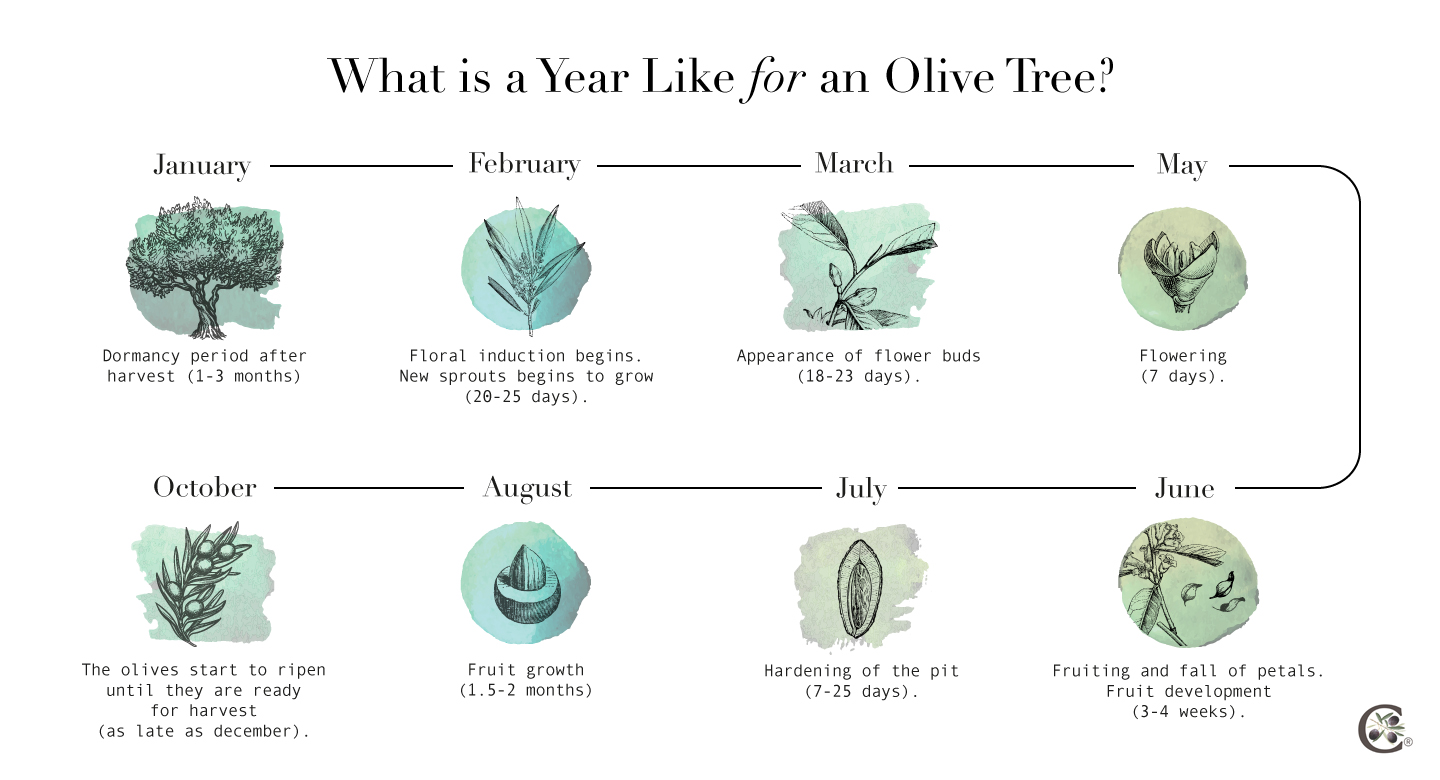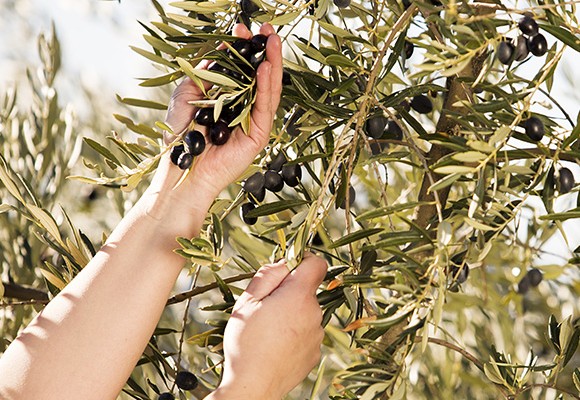After many months being cared for, olive trees give back all the love in the form of olives. Well into the fall, the harvest begins of the fruit of the olive tree, a strong tree allowing many intelligent procedures that enhance the production of olives and hence of olive oil.
The north wind brushing across Tuscany is on the chilly side. I feel it immediately on my face. I have been standing for a while on the porch, looking at the trees in this olive grove as far as the eye reaches. The harshness of winter lurking around the corner is hardly noticed by the workers who have begun harvesting the olives. They’re doing the same thing that the people who lived here centuries ago used to do. With more and better means, of course, but with the same love and respect for nature. Their work will soon yield liquid gold, extra virgin olive oil.
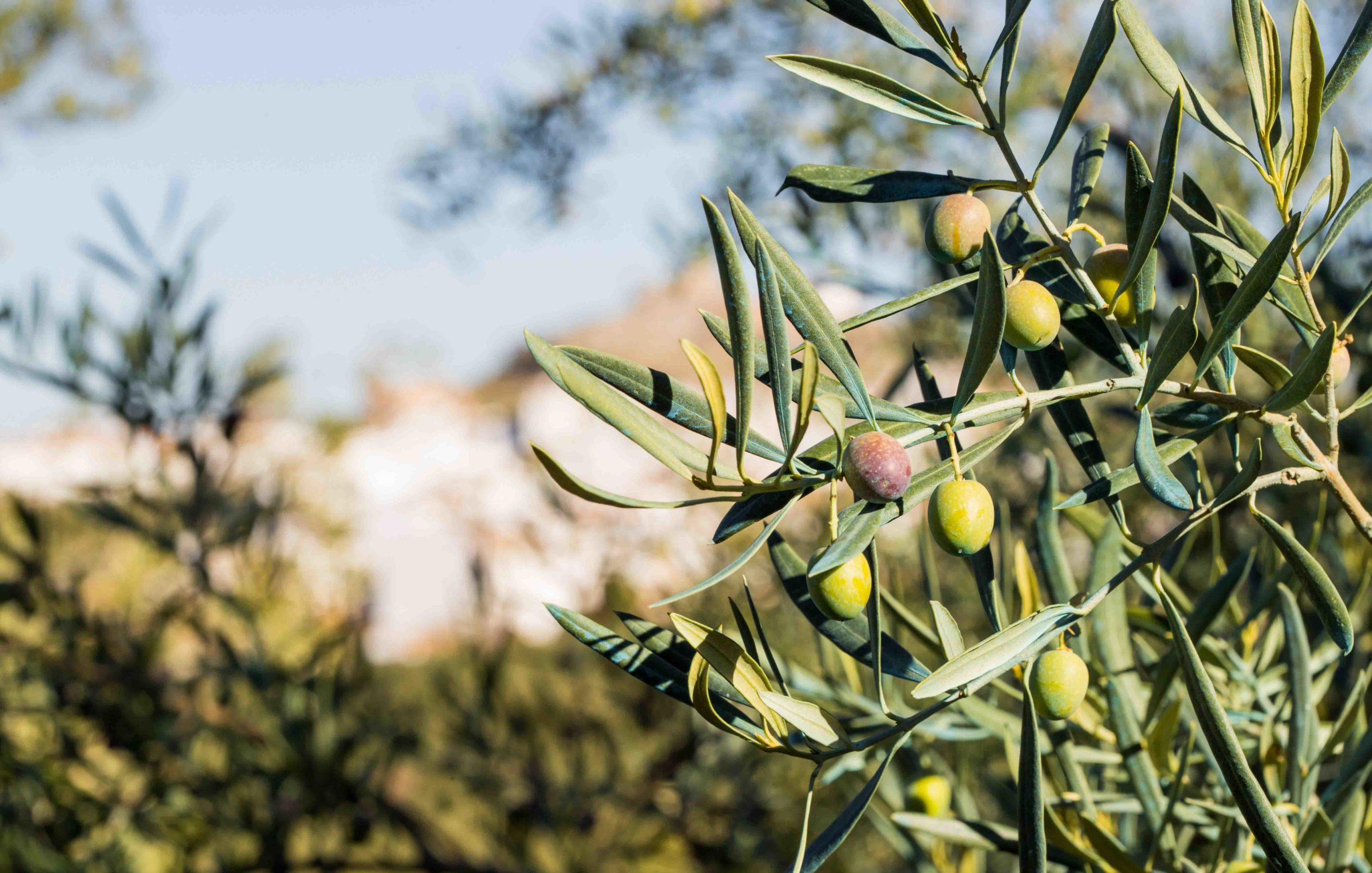
Human beings have learned an awful lot about olive trees over the past millennia. Improving how they take care of the trees is essential to increase the yield and quality of olives. We are not dealing with weak trees. Quite the contrary, olive trees represent strength and intelligence.
TREES THAT ARE EASY TO GROW
When I type out the word “strength” I am referring to the tree’s capacity to withstand low temperatures (as low as -10º C or 14º F) and the frost of Mediterranean climate, as well as long periods of drought in summer. Even the leaves (which are renewed every two or three years) have a system to minimize water loss. Only the wind can complicate things quite often for the flowers.
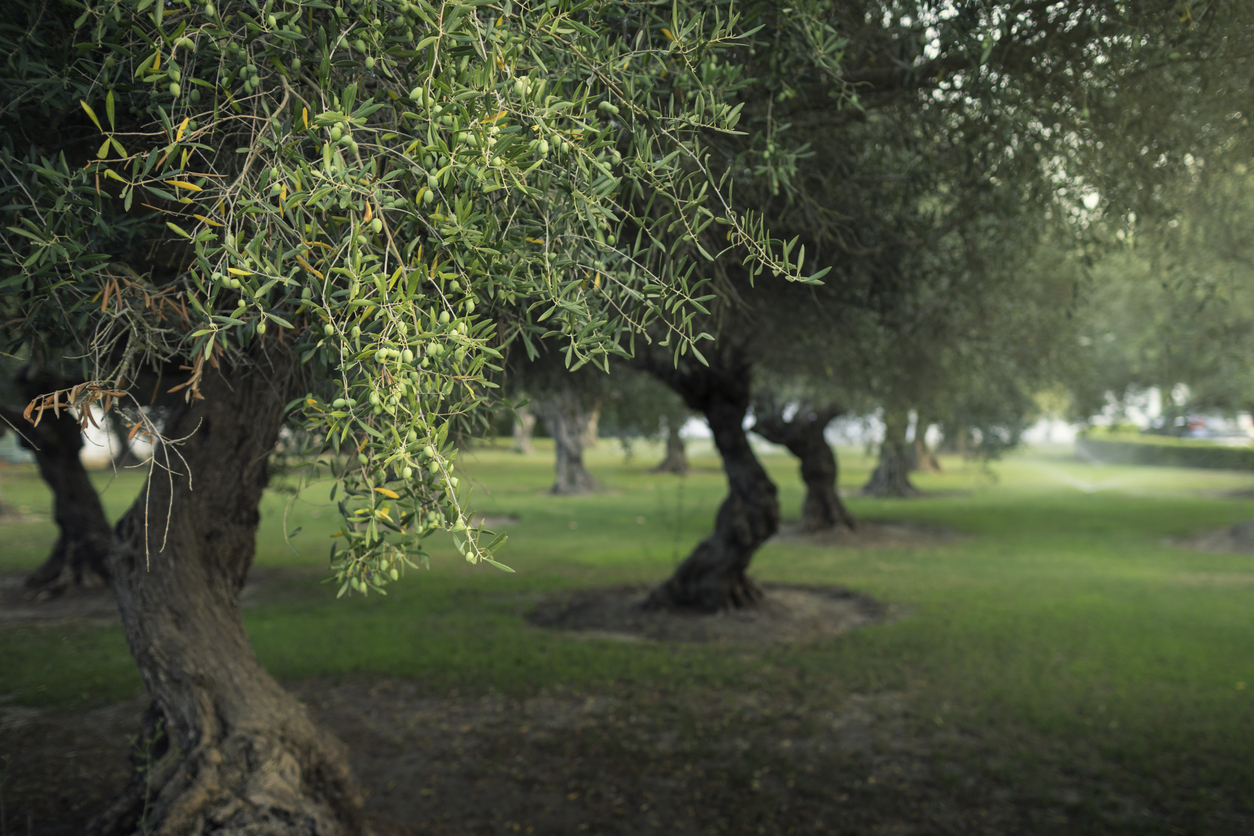
Olive trees can grow to between 6 and 33 feet and can live for hundreds of years (even for over a thousand years). Because of their characteristics and capacity to withstand extreme conditions, they are easy to care for. Maybe that explains why there are over 1,000 different varieties…
HOW DOES AN OLIVE TREE BEHAVE IN STRESSFUL TIMES?
When my fingers type out “intelligence” I am referring to a commitment with nature and, hence, with human beings. Depending on how the year has gone (rainfall, temperature, pruning, nutrients), an olive tree ‘decides’ whether its flowering will be more or less intense. The key is the hydraulic and nutritional stress six weeks before flowering. Even though it may have produced flowers, an olive tree might not have the resources needed to continue with the flowering process–this leads to miscarriages. In other words, the growth and development of the fruit is thwarted.
An olive tree produces hermaphrodite flowers, those which can yield olives, and male flowers, which only produce pollen. Although the number of flowers is very high (in normal conditions), around just 2 percent of them become olives. No worry: it’s more than enough to obtain the liquid gold we are looking for.

CAN OLIVE TREES WITHSTAND FIRE?
The strength of an olive tree can lead it to overcome fire. I have witnessed the sad spectacle of burning olive trees, but I’ve also seen with joy how they have recovered. They have a great regeneration capacity thanks to their dormant buds.
If it is a partial fire, not much is needed for a faster recovery. Just cleaning or removing the damaged part of the trunk and branches and using rich nutrients that can be easily assimilated by the tree. The tree itself will do the rest.
If the damage is more severe there is the option of sawing the tree down, leaving a stump just above ground level. The olive tree will sprout up again thanks to the branches that grow from the stump, which would normally protect the trunk from the sun in the summer. Pruning will be required over the years so that it can become a tree with its trunk. It’s a long procedure but it will be yielding olives throughout the process.

CHARACTERISTICS OF THE ROOTS OF AN OLIVE TREE
Olive trees take root easily. Their comfort zone consists of soil that drains well (no puddles) and allows the roots to spread out, occupying an area below the ground as wide as the canopy. The roots need space to grow downward (over four feet), with plenty of air to allow the roots to spread out without constraints.
The root system branches out in such a way that in times of water shortage the roots seek out the nutrients it needs to survive. That is why an olive tree has so many different roots.
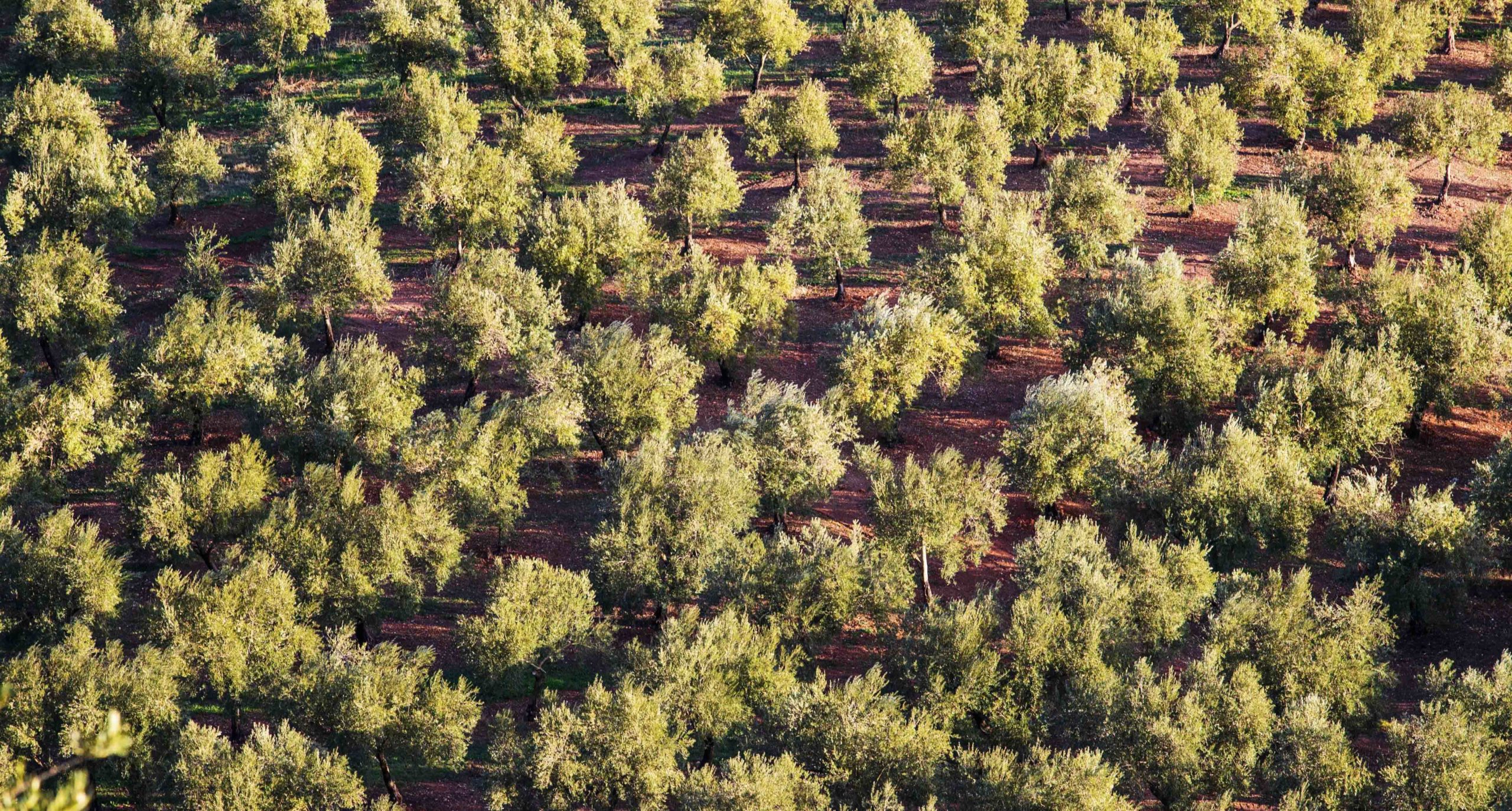
I could go on and on writing about olive trees. In classical Greece, for instance, it was considered a sacred tree. Olive trees are often mentioned in the Bible and in the literature of writers from the Mediterranean Basin. The olive branch is the symbol of peace. For these and many other reasons we must respect this gift of Nature. If we play our part, they will give us back great food.
